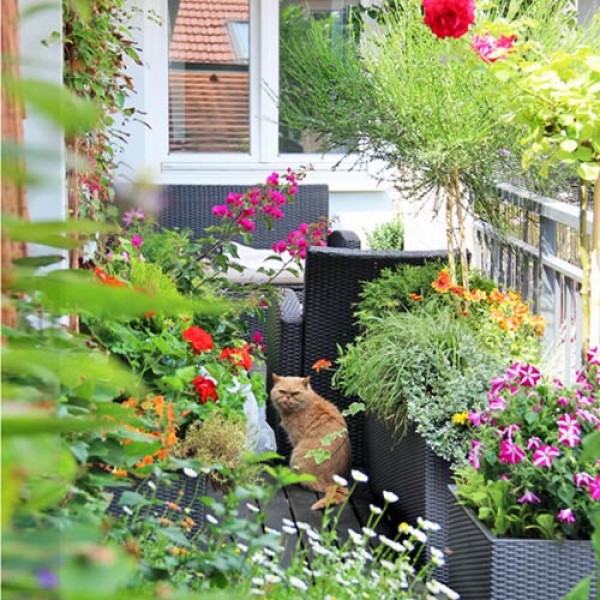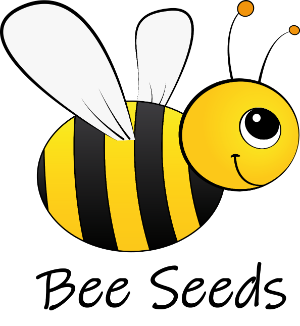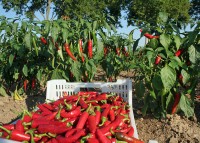
Bee-friendly Balcony
How to support biodiversity and wild bees on the balcony
Not everyone has a garden where they can protect and support bees and butterflies, but "only" a balcony. But here, too, you can do something for protecting wildlife, especially as these small, green oases can be of particular importance in urban deserts.
This starts with a colourful selection of bee-friendly balcony plants and continues with an insect hotel, insect watering stations and small pots with sand and soil as nesting aids for ground-nesting bees.
Flower variety for wild bees
Bees need a wide supply of flowering, nectar-rich plants throughout the season, so it is good to have a good selection of plants that have different flowering times. Particularly regional flowering plants are readily visited by wild bees.
Many balcony plants in particular are bred to have lush, double flowers, but these offer no nectar or pollen for the bees, or the path to them is blocked by too many and dense petals. Therefore, it makes sense to go for flowers with unfilled blossoms; these offer most food for the bees.
It is best to plant your balcony with a combination of colourful, early and late flowering flowers. For example, you can use lantana, verbena, lavender, lobelia, marigolds, stone crop, bellflowers, nasturtiums, snapdragons, nemesia, unfilled asters, cushion phlox, apache beggar-ticks, heliotrop, zinnias. It also looks pretty to sow a wildflower mix in a balcony tub or box.
Another great food source for (wild) bees are flowering herbs. Therefore, you should simply let the kitchen herbs bloom on the balcony and can then enjoy a lush buzzing and humming. Particularly popular are thyme, savory, borage, dill, coriander, marjoram, oregano, mint, rosemary, sage and chives.
Nesting Aids for wild bees
Insect hotels are also useful and decorative on the balcony. A shallow flowerpot filled with a sand-soil mixture is often colonised by ground-nesting wild bees. It is often sufficient to leave a patch of soil next to some sempervivum plants. Many bees like to nest in vertically standing hollow stems, e.g. of elderberries, mullein or blackberries. These can simply be stuck into the soil of the balcony box..
Watering station
Also bees are thirsty in summer. You can easily set up a special insect watering place: to do this, place a few pebbles in a shallow bowl or bird bath and fill it with just enough water to half-cover the stones. You may also want to add some moss.
It is best to place the watering stations in a sunny, wind-protected spot near bee-friendly plants. It is also important to change the water regularly to prevent algae build-up.
And don`t forget: avoid using turf-based potting soil and pesticides on the balcony














